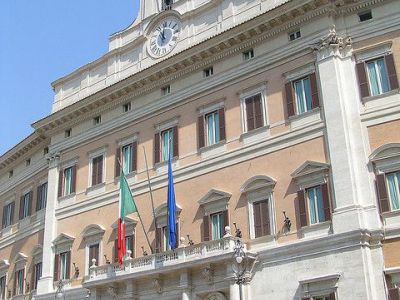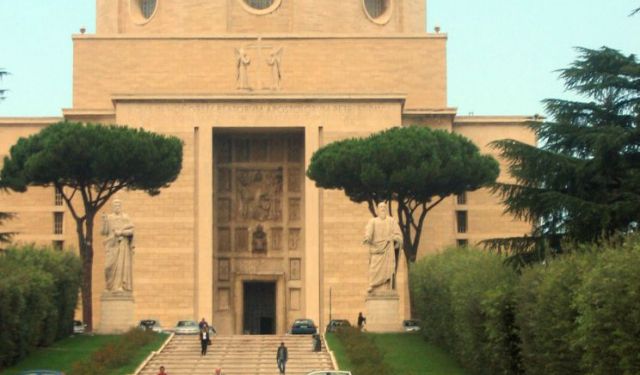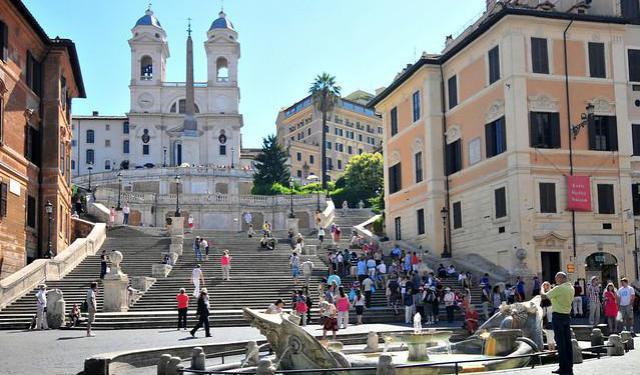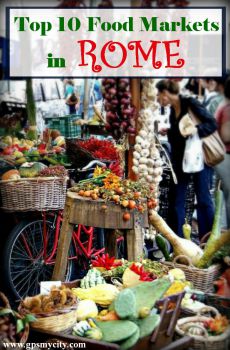Palazzo Montecitorio (Montecitorio Palace - Italian Parliament), Rome
Located on the northern fringe of the Centro Storico, Piazza Montecitorio derives its name from the imposing Palazzo di Montecitorio that dominates its northern side. Since 1871, this grand palace has served as the seat of the lower house of the Italian parliament.
The palazzo's original architect, Bernini, secured his appointment after presenting a silver model of his design to the wife of his patron, Prince Ludovisi. Although completed by Carlo Fontana in 1694, the building initially served as the Papal Tribunal of Justice. In 1871, it was selected as the new Chamber of Deputies for the newly unified Italy. Over time, the palazzo expanded and acquired a second grand façade by 1927. Today, the Italian parliament comprises 630 members who are elected through a majority system with proportional representation. Guided tours of the palazzo provide access to the plenary hall and reception rooms, offering visitors a glimpse into the heart of Italian democracy.
In the center of the piazza, facing the palazzo, stands an ancient Egyptian obelisk. Originally constructed in 589 BC, this remarkable artifact was brought to Rome by Emperor Augustus in 10 BC. Pope Pius VI erected the obelisk in the square in 1789, and it remains one of Rome's most significant obelisks, bearing witness to the city's rich history.
The palazzo's original architect, Bernini, secured his appointment after presenting a silver model of his design to the wife of his patron, Prince Ludovisi. Although completed by Carlo Fontana in 1694, the building initially served as the Papal Tribunal of Justice. In 1871, it was selected as the new Chamber of Deputies for the newly unified Italy. Over time, the palazzo expanded and acquired a second grand façade by 1927. Today, the Italian parliament comprises 630 members who are elected through a majority system with proportional representation. Guided tours of the palazzo provide access to the plenary hall and reception rooms, offering visitors a glimpse into the heart of Italian democracy.
In the center of the piazza, facing the palazzo, stands an ancient Egyptian obelisk. Originally constructed in 589 BC, this remarkable artifact was brought to Rome by Emperor Augustus in 10 BC. Pope Pius VI erected the obelisk in the square in 1789, and it remains one of Rome's most significant obelisks, bearing witness to the city's rich history.
Want to visit this sight? Check out these Self-Guided Walking Tours in Rome. Alternatively, you can download the mobile app "GPSmyCity: Walks in 1K+ Cities" from Apple App Store or Google Play Store. The app turns your mobile device to a personal tour guide and it works offline, so no data plan is needed when traveling abroad.
Palazzo Montecitorio (Montecitorio Palace - Italian Parliament) on Map
Sight Name: Palazzo Montecitorio (Montecitorio Palace - Italian Parliament)
Sight Location: Rome, Italy (See walking tours in Rome)
Sight Type: Attraction/Landmark
Sight Location: Rome, Italy (See walking tours in Rome)
Sight Type: Attraction/Landmark
Walking Tours in Rome, Italy
Create Your Own Walk in Rome
Creating your own self-guided walk in Rome is easy and fun. Choose the city attractions that you want to see and a walk route map will be created just for you. You can even set your hotel as the start point of the walk.
EUR Sightseeing Walking Tour
The Esposizione Universale di Roma (EUR), located in the southern suburb of Rome, was originally constructed for an international exhibition that was planned by Mussolini as a grand celebration of Fascist Italy. However, due to the outbreak of World War II, the exhibition never took place. The architecture of EUR was designed to glorify Fascism and showcases a distinct style that sets it apart... view more
Tour Duration: 2 Hour(s)
Travel Distance: 3.6 Km or 2.2 Miles
Tour Duration: 2 Hour(s)
Travel Distance: 3.6 Km or 2.2 Miles
Roman Forum and Imperial Forums Walking Tour
t's a known fact that Rome wasn't built in a day. But since it was built, the city has stood the test of time and become "eternal." A popular proverb says, "all roads lead to Rome," but very few realize that, inside Rome itself, all roads lead to the Forum.
Indeed, the central hub of ancient Rome, the Roman Forum and the Imperial Forums once served as the... view more
Tour Duration: 2 Hour(s)
Travel Distance: 2.0 Km or 1.2 Miles
Indeed, the central hub of ancient Rome, the Roman Forum and the Imperial Forums once served as the... view more
Tour Duration: 2 Hour(s)
Travel Distance: 2.0 Km or 1.2 Miles
Spanish Steps to Trevi Fountain
An established tourist mecca, today's Rome is hardly imaginable without two of its much loved attractions – the Spanish Steps and the Trevi Fountain. Magnets for tourists as they are, these two sights are connected to a number of other, not less worthy of attention locations, such as the Fountain of the Longboat or Piazza Colonna and its centerpiece, the Column of Marcus Aurelius, to... view more
Tour Duration: 1 Hour(s)
Travel Distance: 2.0 Km or 1.2 Miles
Tour Duration: 1 Hour(s)
Travel Distance: 2.0 Km or 1.2 Miles
Rome Shopping Streets Walking Tour
Loved by tourists for its busy fashionable streets and significant baroque icons, the so-called ‘Tridente’ is one of the Eternal City's most lusted-after areas, formed by Via dei Condotti, Via Borgognona, Via Frattina and the adjacent Via del Corso. It is perhaps the most high-end destination for Roman shopping, with a concentration of renowned jewelers and important Italian/international... view more
Tour Duration: 2 Hour(s)
Travel Distance: 2.9 Km or 1.8 Miles
Tour Duration: 2 Hour(s)
Travel Distance: 2.9 Km or 1.8 Miles
Holy Sites Walking Tour
As the cradle of the Catholic Church, one of the world's largest organizations, Rome has a large number of valuable, sacred places of worship. Crowded with architectural splendors from different periods of time, each of its churches and basilicas represent a significant part of culture and history.
Take this self-guided walking tour to discover Rome's magnificent religious heritage,... view more
Tour Duration: 3 Hour(s)
Travel Distance: 6.9 Km or 4.3 Miles
Take this self-guided walking tour to discover Rome's magnificent religious heritage,... view more
Tour Duration: 3 Hour(s)
Travel Distance: 6.9 Km or 4.3 Miles
Rome Introduction Walking Tour II
Rome, the Eternal City, carries a legacy shaped by centuries of resilience, transformation, and cultural flourishing. The fall of the Roman Empire in 476 AD marked the end of an era, plunging Western Europe into the dark Middle Ages. Yet, even amid the disarray, Rome endured as a beacon of unity, largely due to its status as the center of Catholicism. The papacy wielded spiritual influence,... view more
Tour Duration: 2 Hour(s)
Travel Distance: 3.4 Km or 2.1 Miles
Tour Duration: 2 Hour(s)
Travel Distance: 3.4 Km or 2.1 Miles
Useful Travel Guides for Planning Your Trip
10 Best Food Markets in Rome Italy
Of all the things Italy is most famous for (cars, music, fashion, movies, etc.), food is, undoubtedly, top of the list. Rome may well not be the whole Italy, but no Italy is whole without Rome... And the Romans, much as all their fellow-Italians, like it "fresco", hence the abundance of...
Souvenirs Shopping: 15 Authentic Italian Things To Buy in Rome
Rome is the Eternal City and, as such, the list of gift options available here is countless. Whether it's something edible, drinkable, wearable or pleasing to the eye that you want - you will find it all here in abundance. However, if time or budget is the factor, perhaps you might want to...
17 Best Gelaterias in Rome Italy
For ice cream lovers and dabblers this guide is a treasure chest of Rome’s best gelato shops. There are gelaterias everywhere. Many visitors to Rome only have a few days to explore the city. You owe it to yourself to make the most of your time and find the gelato locals eat. Often the authentic...












